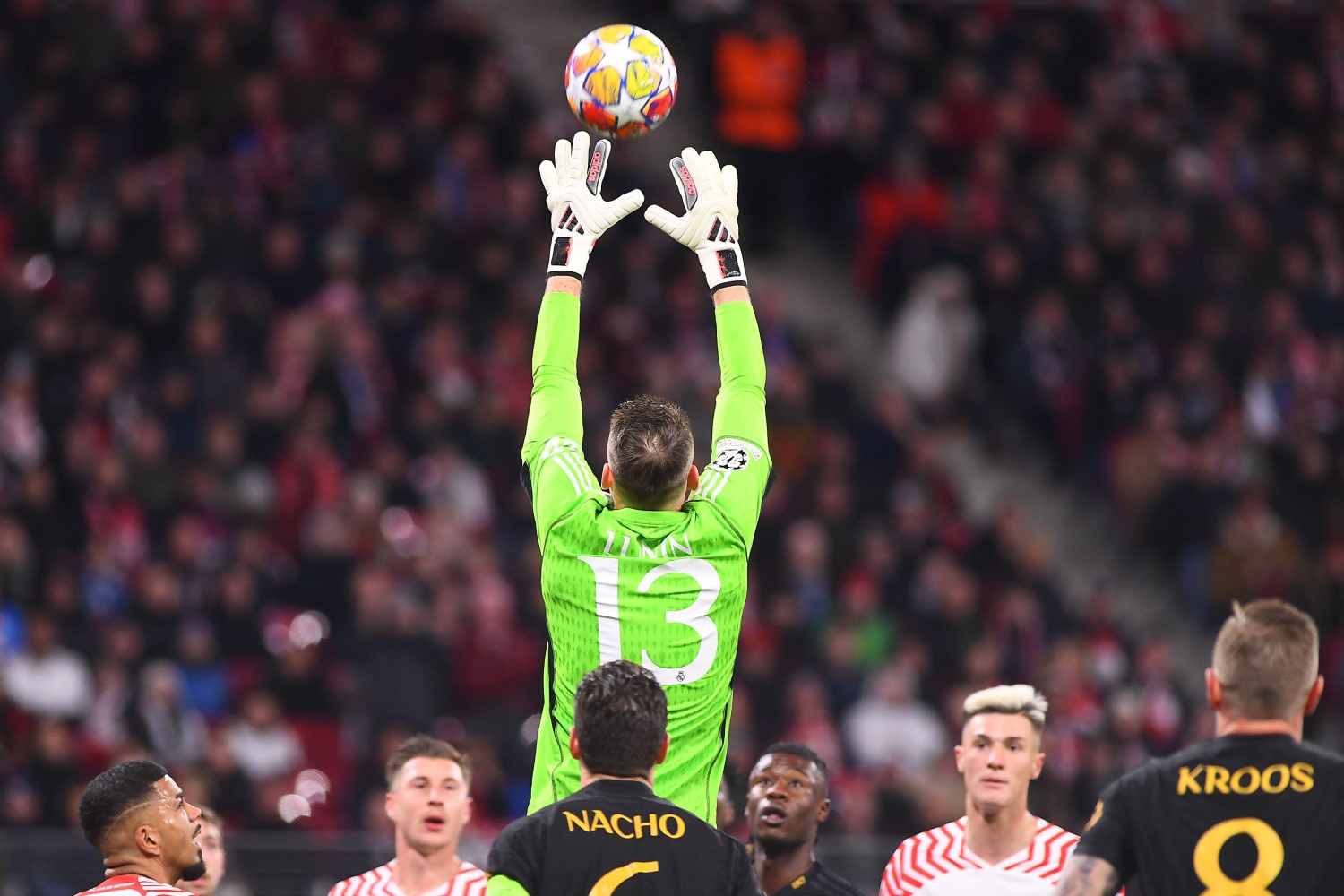A unique position, the goalkeeper. But also one of the most measurable, given a large aspect of their role is simply to keep the ball out of the net. It possibly gets overlooked just how much a good or bad goalkeeping season can impact the outcomes of a team's season relative to other positions on the pitch, with there often being a gap of 10-20 goals between the best- and worst-performing shot-stoppers in a league in any given season.
Of course, in the modern game, goalkeepers are expected to do much more than save shots. At the elite level, goalkeepers must be aerially confident and penalty box dominant, quick off their line to sweep up behind, and be comfortable and at ease with baiting then beating a press when the ball's at their feet. Today we're going to work through each of these skill sets to identify some of the best-performing ‘keepers around Europe this season.
All viz and analysis in this article have a 1200 minutes played cutoff.
Shot-Stopping
As mentioned, the shot-stopping aspect of a goalkeeper's job is both the most important and the most measurable.
When we upgraded the Hudl Statsbomb xG models a couple of seasons ago, one of the metrics we revisited was the shot-stopping model. Where it previously only included the shot placement to measure how difficult a shot faced was to save, we now incorporate the velocity of the shot as well, plus a host of other upgrades (see the article for details).
So, here's who the Hudl Statsbomb post-shot xG models think has been the best (and worst…) shot-stoppers in the Big 5 leagues this season:
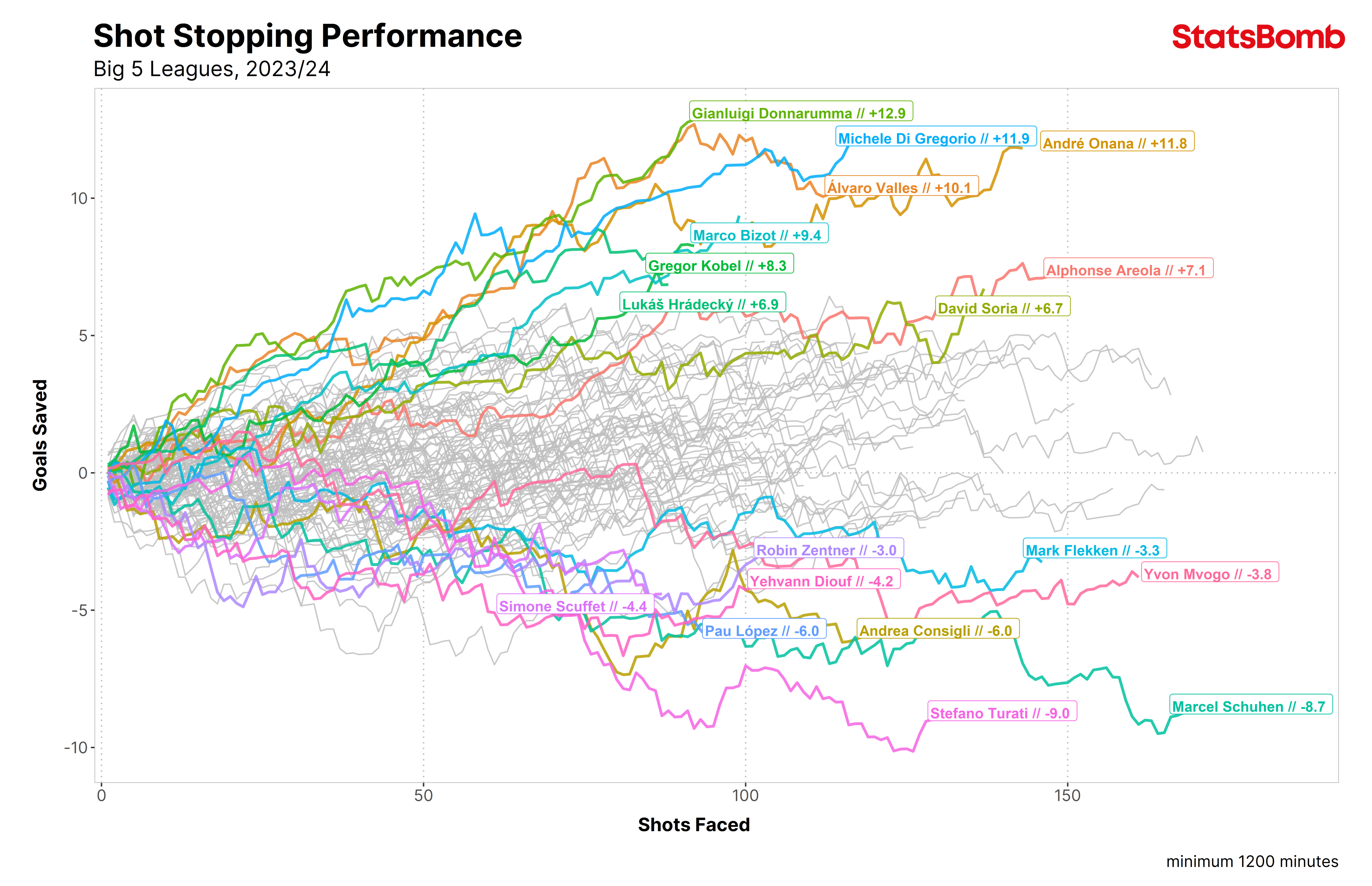
So far in 2023/24, Paris Saint-Germain's Gianluigi Donnarumma has saved +12.9 goals based on the shots he's faced and their difficulty, closely followed by Michele Di Gregorio (Monza, +11.9) and André Onana (Manchester United, +11.8). Interestingly, Álvaro Valles of Las Palmas was tracking close to Donnarumma a few weeks ago, but a run of conceding goals at a rate above expected has seen him drop away from the top three.
Absolute goals-saved numbers aren't necessarily the optimal way to evaluate a goalkeeper's shot-stopping, though, as those that face more shots have more opportunity to over- or underperform their numbers. So, we need to account for the volume of shots faced and look at things on a per-shot basis.
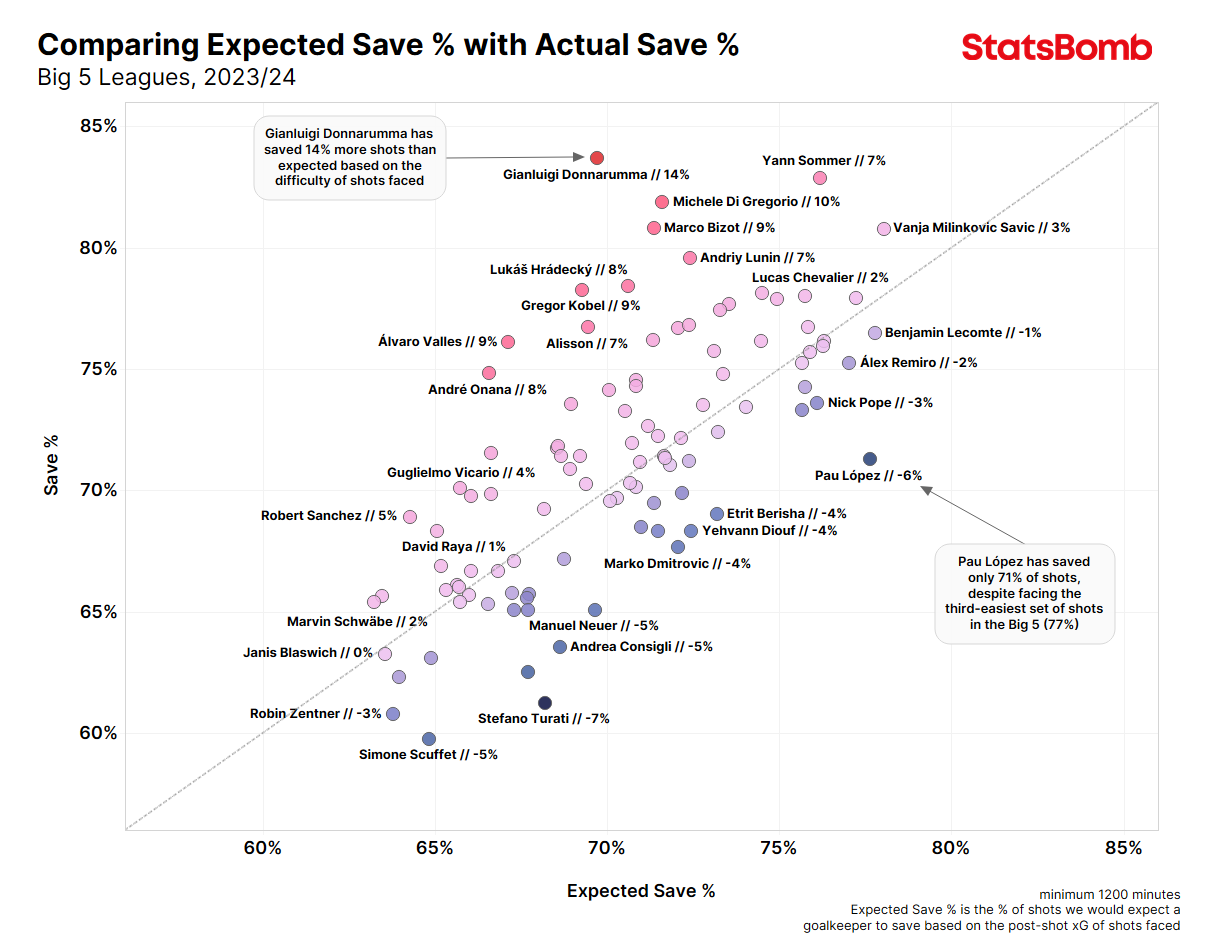
Donnarumma's numbers become even more impressive in this context, as he's saved 14% more shots than our post-shot xG numbers would expect him to: he's expected to concede 30% of shots – he's actually only conceded 16%.
Looking at the shot placement view below, it's clear that Donnarumma's using all of his 6ft 6in frame to reach shots heading for the bottom corners, stopping several efforts placed just inside the post.
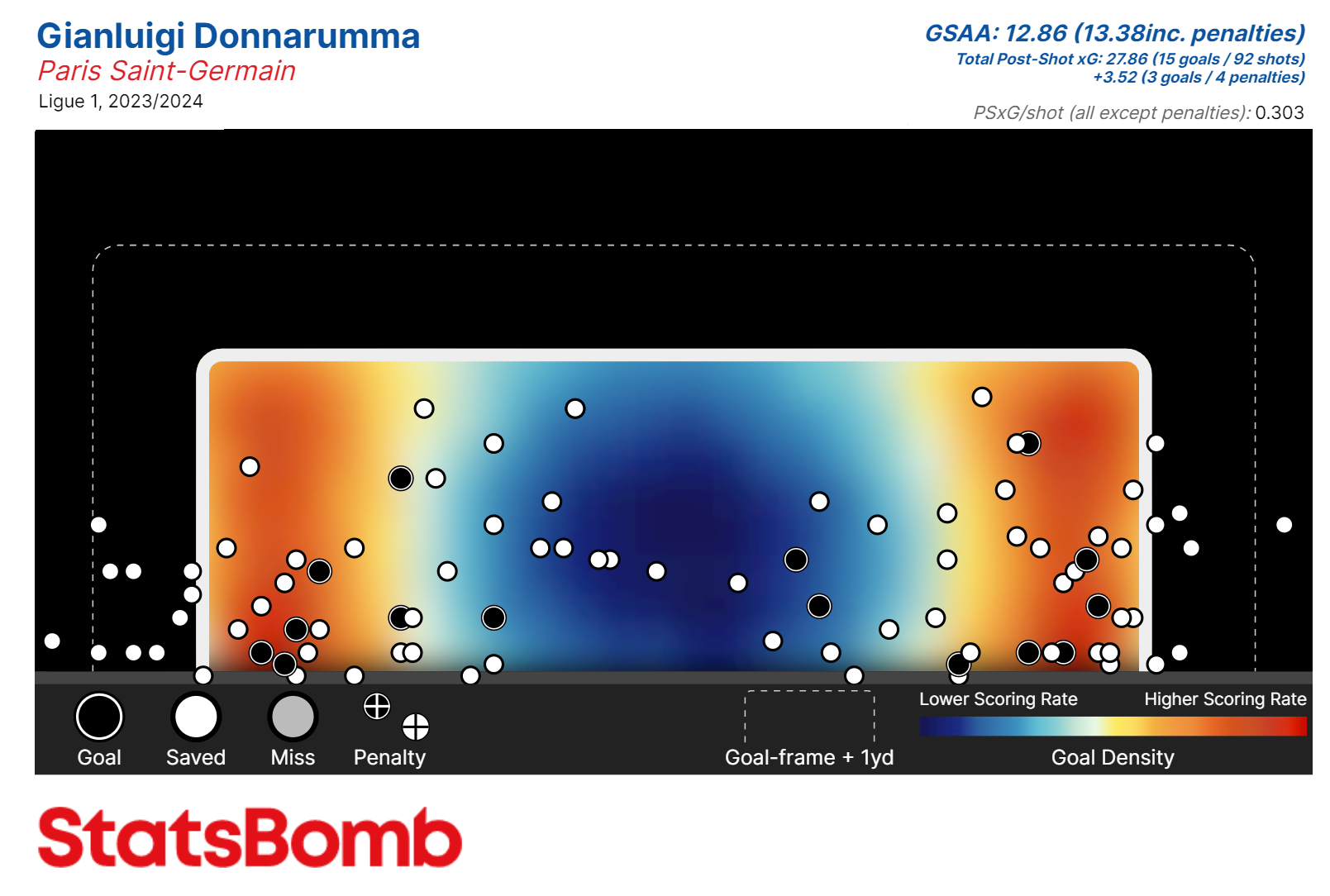
It's highly impressive from Italy's number one. It'll be interesting to see how well Donnarumma maintains this when he's still, at 25 years old, potentially a few years away from his peak years.
For comparison, we can look at his Ligue 1 colleague Pau López from Marseille. Only Stefano Turati of Frosinone has performed worse than López on a per-shot basis this season, and curiously this has come despite López facing the third-easiest set of shots: his expected save % is 77%; he's actually saved only 71%.
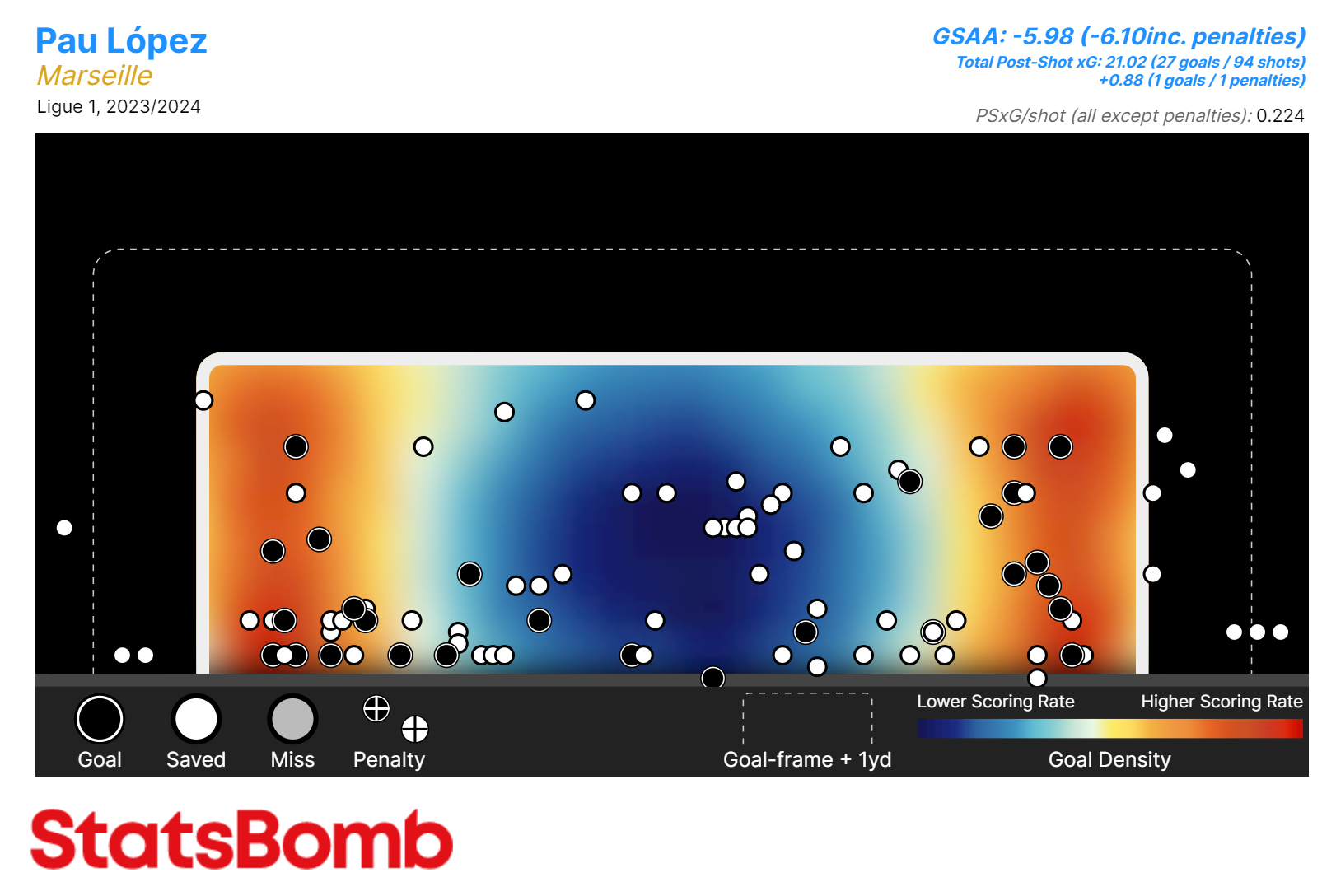
Compared to Donnarumma's shots faced map, López has faced many more shots straight at him in the middle of the goal -- he's managed just fine with those. Cast your eyes to either side, though, and it's clear where the problems lie, saving just 6/15 shots to his left (viz-right) and 8/17 to his right (viz-left).
To reiterate the point in the opening paragraph, Donnarumma's saved nearly 13 goals in Ligue 1 this season; López is at -6: a 19-goal swing that will undoubtedly impact the league table.
Cross Claiming & Aerial Ability
It's up for debate which skillset in a goalkeeper's range has the next most significant contribution behind shot-stopping, but claiming crosses has been around the longest, so we'll start there.
Cross claiming can be a complex one to measure with event data. It's a pretty low frequency event, and even the decision to come for a cross or not has risks on both sides. Not coming for a cross can mean a goalkeeper is better positioned to save the subsequent shot than they would've been if they'd attempted to claim, but that's counterbalanced by the fact they could stop the shot occurring in the first place if they successfully deal with the cross.
We can model how aggressive a goalkeeper is in deciding to come for a cross by assigning each pass into the box an "xClaim" number – basically, how likely is this pass to be claimed by a goalkeeper, based on the start location, where the pass ends, the height of the pass, etc. We can then look at how many passes a goalkeeper actually comes for and see whether they're more or less likely than average to attempt a claim.
That's what our Cross Claim Attempts over Average % (CCAA%) model does.
Here, we will again compare two goalkeepers at opposite ends of the metric: Andriy Lunin (Real Madrid) and Guillaume Restes (Toulouse).
Since winning the gloves from Kepa in the battle to be the long-term successor to Thibaut Courtois, Lunin has won the hearts of Real Madrid fans with some complete goalkeeping performances in nets: keeping the goals out but also displaying excellent command of his box.
By our CCAA% model, Lunin is the most aggressive cross-claimer in the Big 5 leagues, attempting to claim 7% more crosses than we'd expect the average goalkeeper to try and collect. How this looks in reality is 32 cross attempts in La Liga, with 30 of them successful (94%), at a rate of close to two claim attempts per 90.
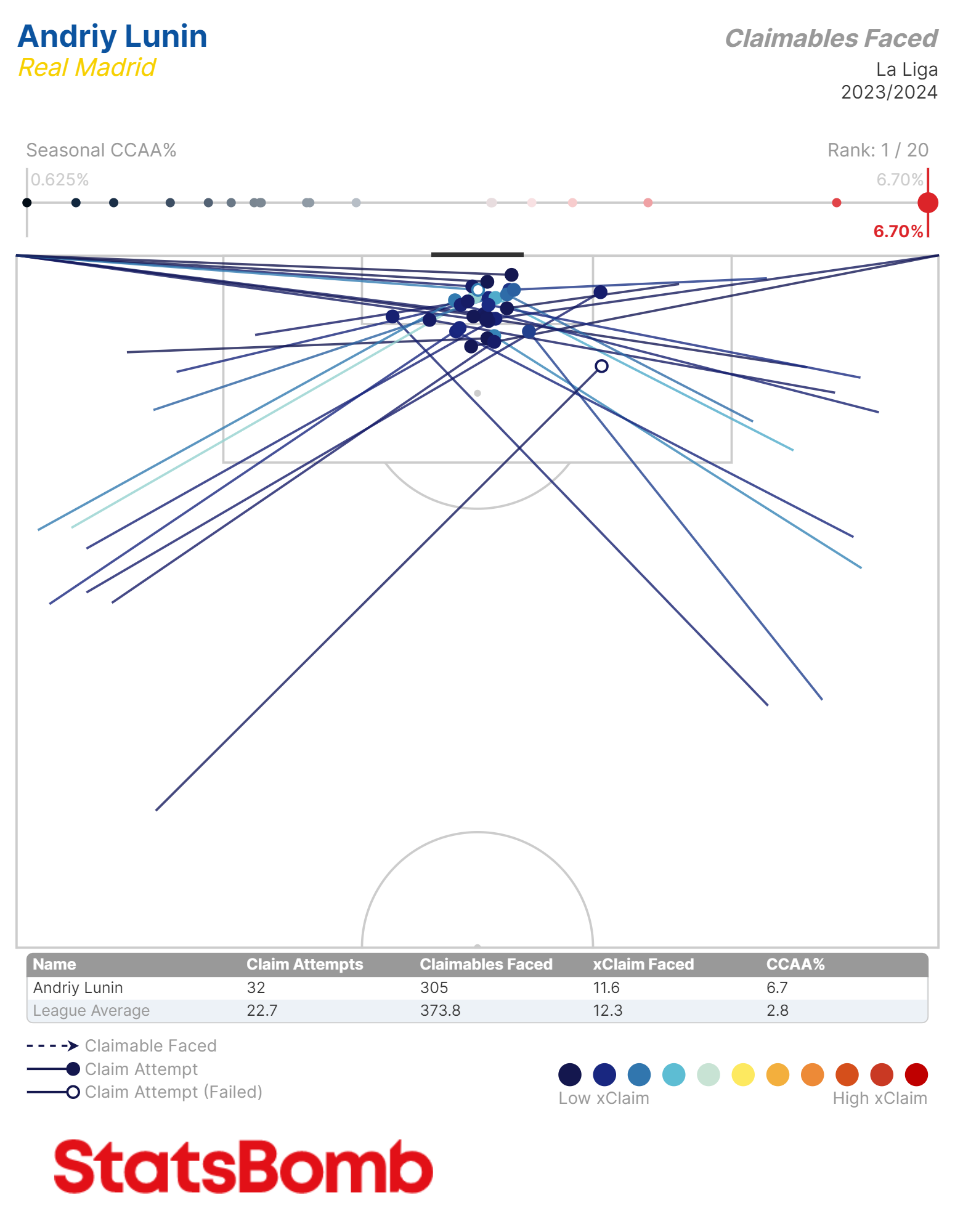
Guillaume Restes ranks at the opposite end of the scale. From the top, we should acknowledge that we're talking about the youngest #1 in the Big 5 leagues: Restes only turned 19 in March. Quite literally, he probably hasn't finished growing.
Right now, though, he appears pretty shy about claiming balls into the box. How much of this is down to prioritising being in a good position to save any resulting shots is unclear, but even when Restes has attempted a claim, it’s pretty clear this is an area he will need to develop over time. Of 15 claims attempts (~0.5 per 90), Restes has succeeded in just seven (47%).
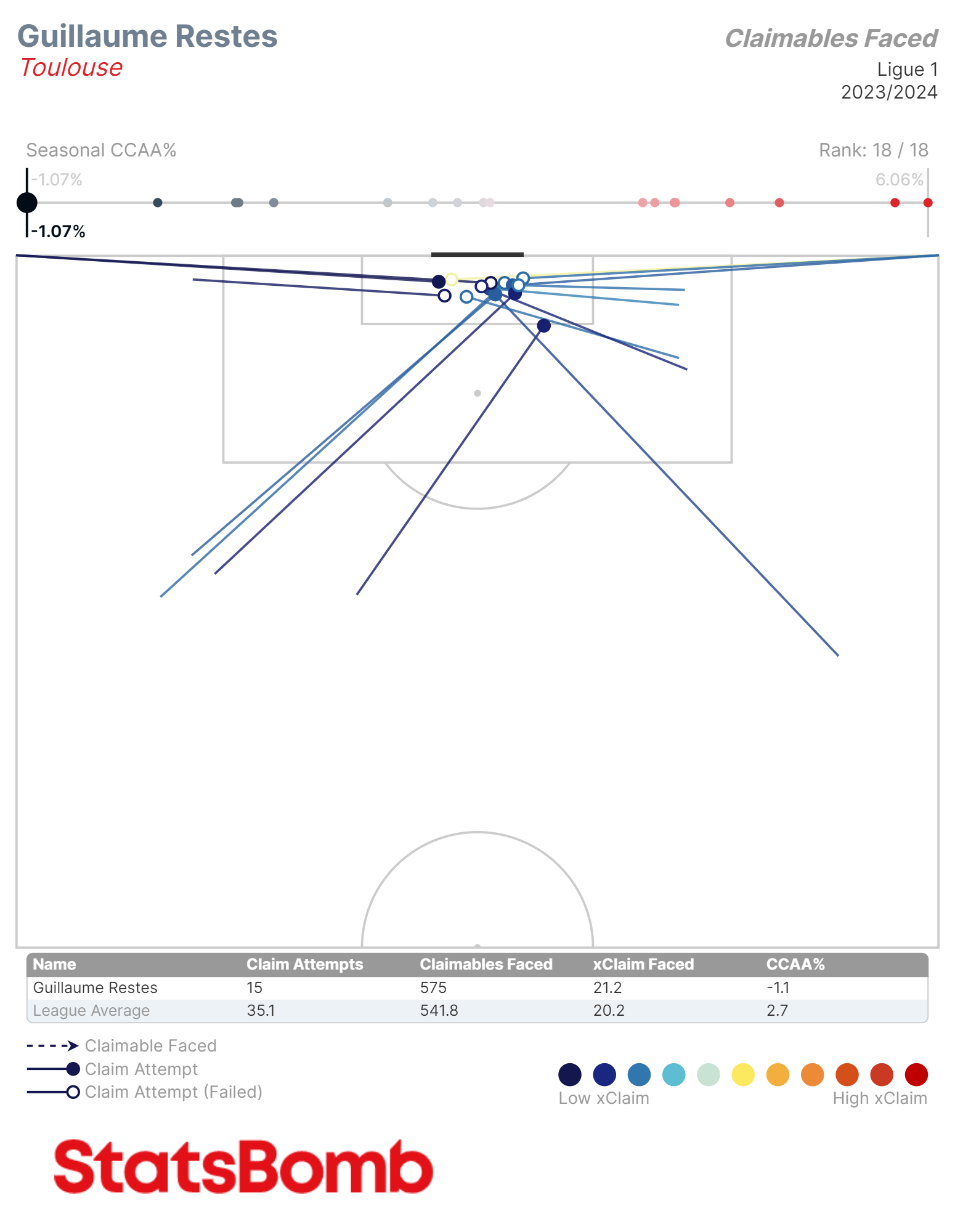
Sweeping
It's time to turn our attention away from the penalty box.
With more and more teams looking to squeeze the play high up the pitch than ever before, or at least have some form of high press they break out in certain situations, having a goalkeeper that can sweep up in behind and get to throughballs or balls over the top before they turn into clear-cut chances is a valuable skill.
So, who are the most aggressive sweepers in the Big 5 leagues?

If it's sweeper 'keepers you're into, look no further than the Bundesliga. Half of the goalkeepers in the German top tier sweep up higher up the pitch than Ligue 1's most aggressive sweeper, Brice Samba. Watching Manuel Neuer playing on the halfway line for over a decade has evidently rubbed off on them.
None more so than Manuel Riemann. Riemann's only been playing Bundesliga football since 2021/22, having spent 15 years in the 2. Bundesliga and below before then, but has since gained a reputation for being one of the most aggressive goalkeepers in coming off his line in the world. Not only does Riemann come out further than any other 'keeper in the Big 5 on average, but he does it more frequently than any other 'keeper, too (2.4 sweeps, interceptions, and ball recoveries outside of the penalty box per 90).
The viz below and Average Height calculation only includes sweeps that occurred outside of the penalty box.
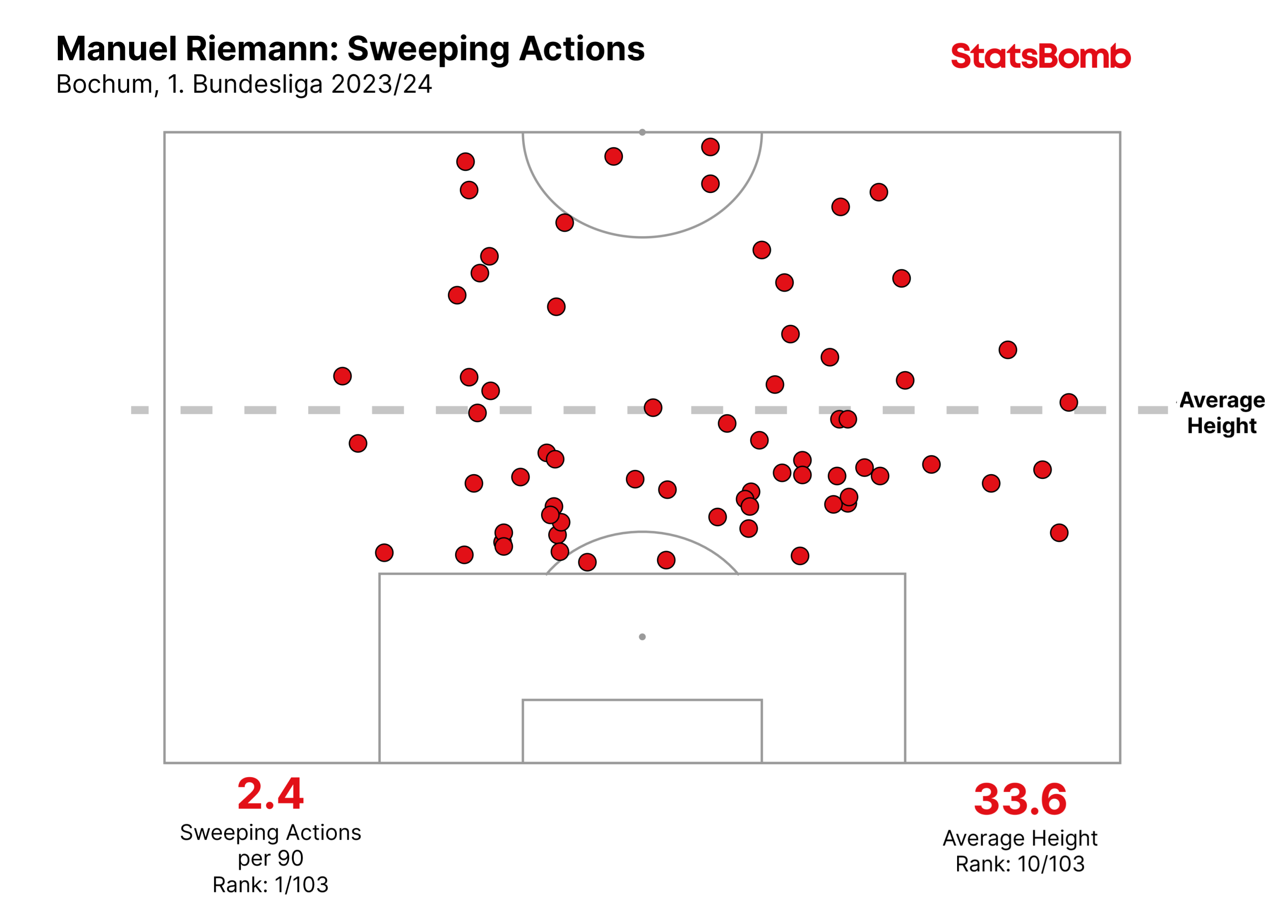
In Possession
Lastly, it would be negligent to ignore the in-possession demands placed on goalkeepers nowadays. To many teams, they're a vital part of the first phase.
There are many avenues we can go down to identify in-possession styles and how well they perform on the ball, but to start with let's first look at how involved they are in the first place, and how far up the pitch they are willing to venture to join in with the build up.
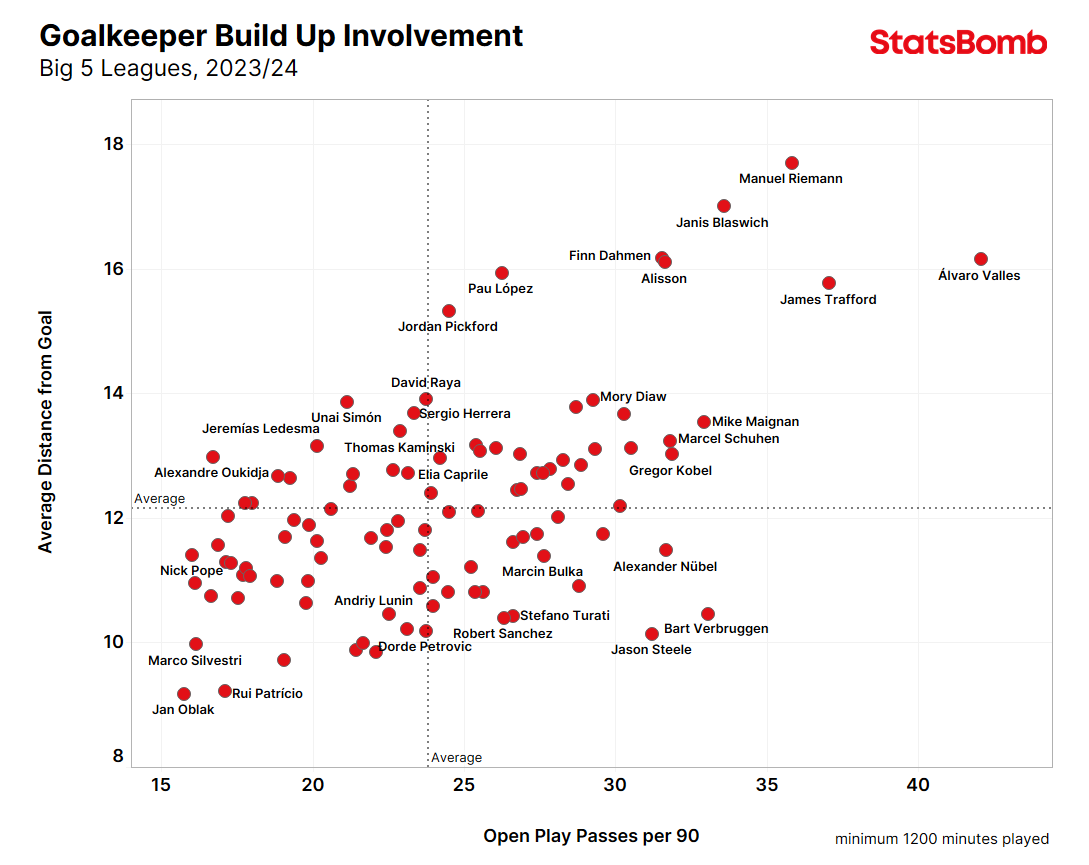
Manuel Riemann stands out again, coming further off his line than any other goalkeeper in possession and out of possession, as we saw above. I can't be the only one thinking about tuning in to Bochum's next game off the back of this article.
We'll come to Álvaro Valles shortly, but first we'll use the Brighton duo of Jason Steele and Bart Verbruggen to illustrate the next phase of our analysis.
If you're going to be heavily involved in your team's build up phase, you need to be able to handle the ball under pressure. Otherwise, it defeats the point of even trying to bait and break the opposition press. Steele and Verbruggen, in particular, have been in the spotlight this season due to the extreme way Roberto De Zerbi likes his teams to play out from the back.
Using the Hudl Statsbomb Expected Pass (xPass) model, which models how likely a pass is to be completed based on several factors, including length, height, location, and whether the pass was played under pressure or not, we can measure how effective the goalkeepers have been in handling the ball in the press. We’ll look at each' keepers expected pass completion % against their actual pass completion %, only looking at passes played under pressure.
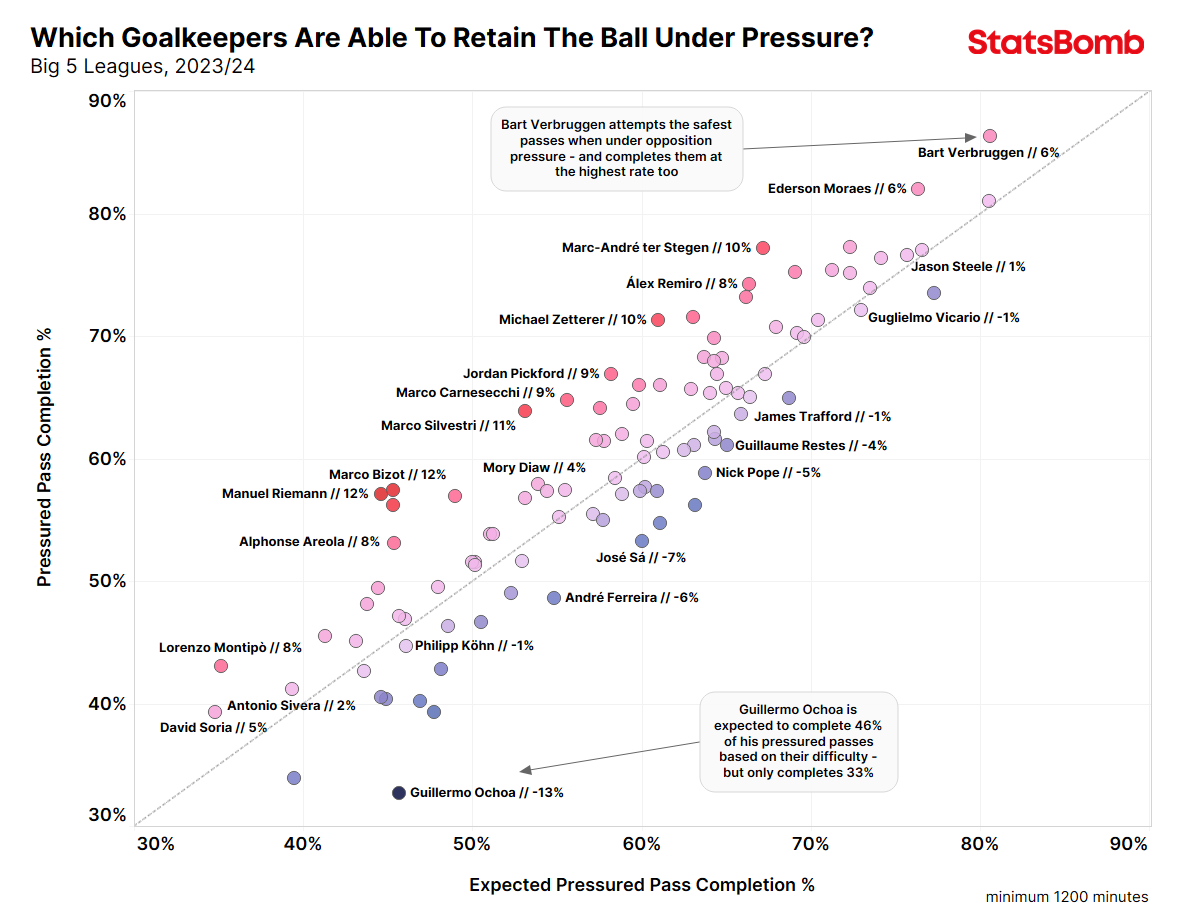
Verbruggen comes out favourably on the raw numbers, completing 86% of his passes under pressure, compared to Steele only completing 76%. However, Verbruggen also attempts safer passes, with an expected completion % of 81% compared to Steele's 76%.
Let's go even further. Being involved in the play is one thing. Retaining the ball under pressure is another. But being able to actually play through the press and move your team into the second phase of possession is where there is real value at the top level. Let's look at the goalkeepers that make the most line-breaking passes, whilst also considering how much space the receiver of the line-breaking pass is in. This is so we can potentially identify 'keepers that are genuinely breaking the press instead of just moving the ball past the first line of the press into a tight area ahead of the second line.
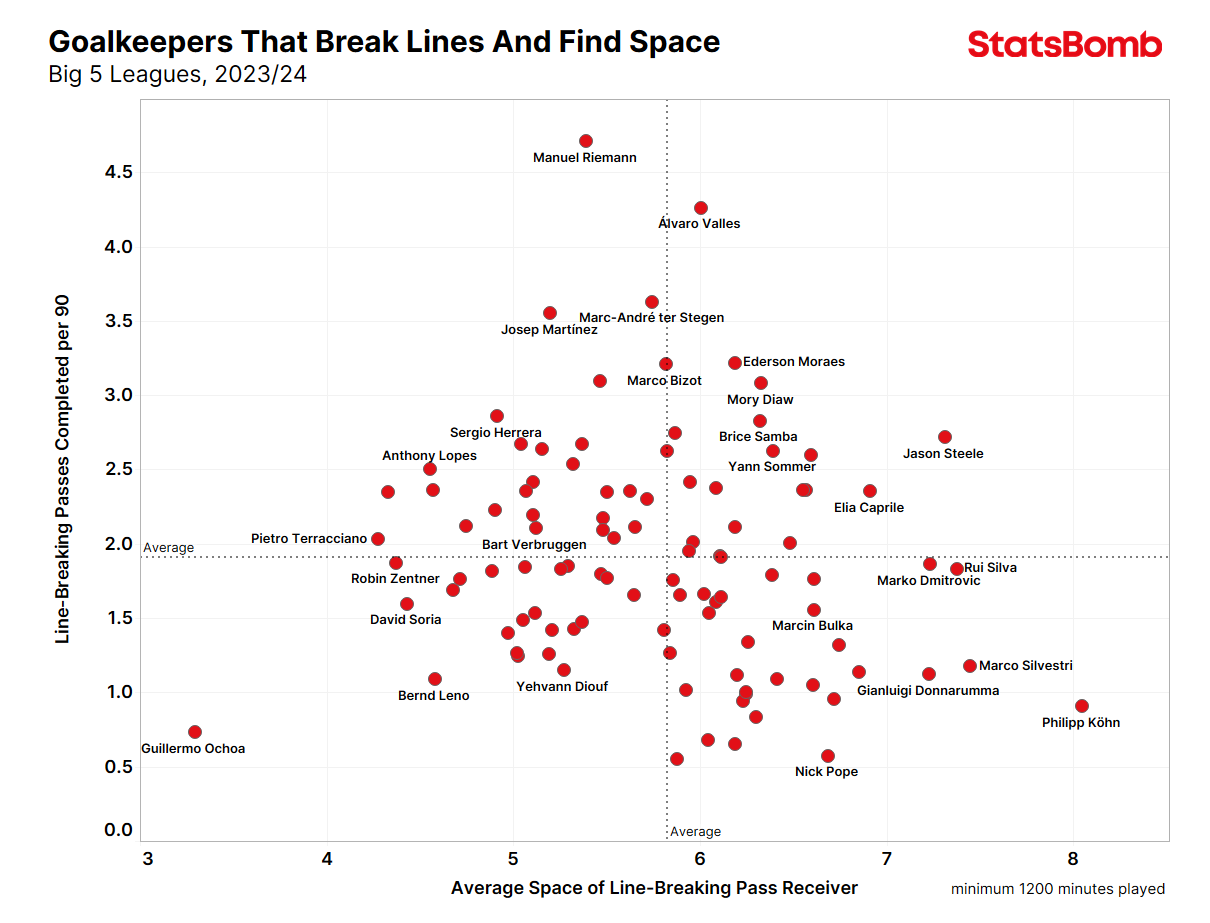
To wrap up this mini-Brighton-goalkeeper-analysis, where Verbruggen had the advantage in retaining the ball under pressure, Steele appears to have a slight advantage in actually being able to break the press (though, it should be said, these are fairly small samples to be making definitive conclusions with).
Both complete similar volumes of line-breaking passes when they're on the pitch, but on average, Steele has been able to find a teammate in ~2m more space than Verbruggen does. In some ways, it feels like De Zerbi could pick either based on how aggressive he wants to be: Verbruggen when he wants Brighton to play safer and keep the ball a bit more, and Steele when he's happy to take more risks in build up to try and play through more quickly.
Manuel Riemann and Álvaro Valles complete more line-breaking passes than the other goalkeepers, though this is partially to do with them being much more involved and having more opportunity to make those passes, as they have more touches of the ball.
We'll look into Valles' line-breaking passes more deeply, especially as he finds teammates in space at an above-average rate.
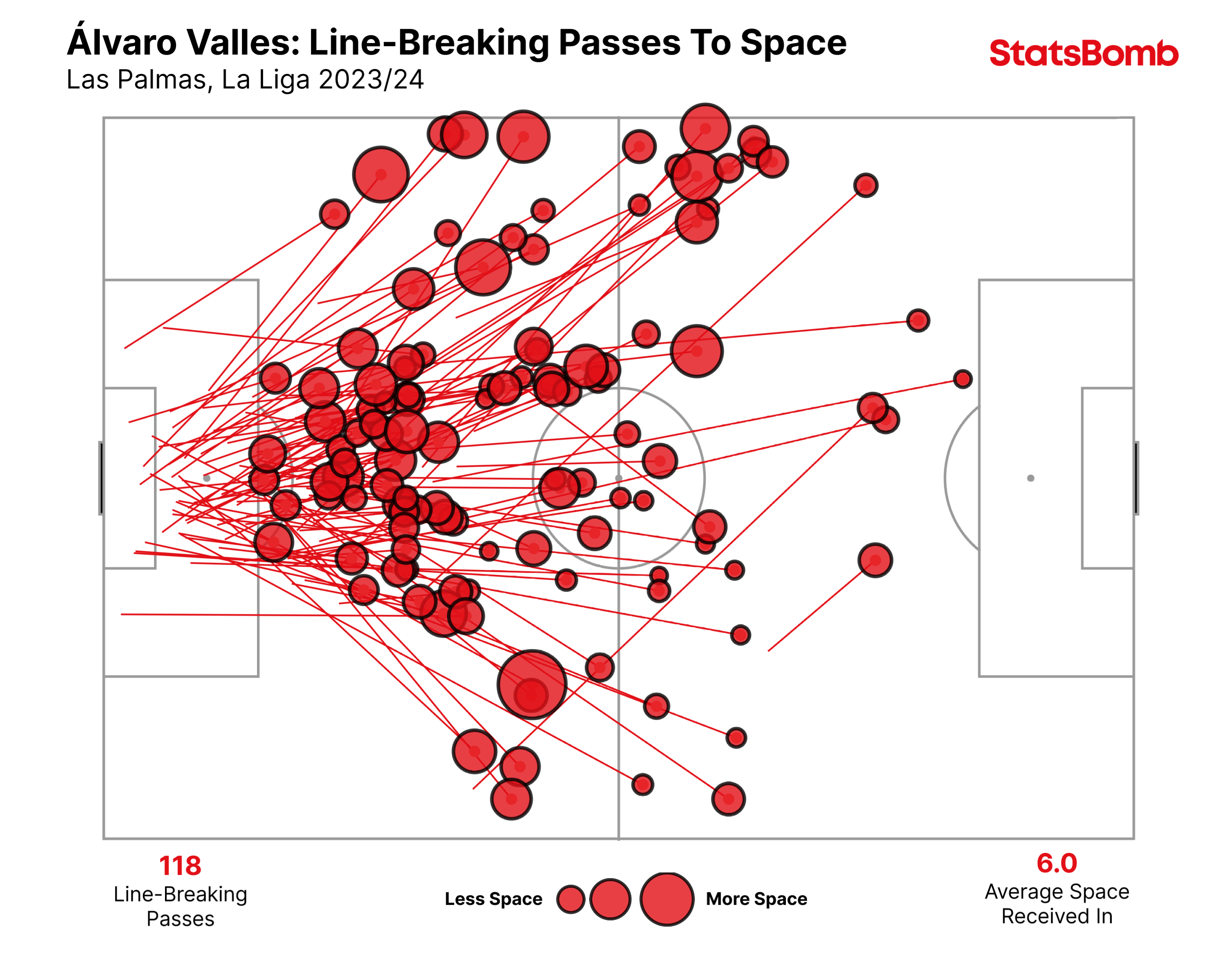
You can create four groups in amongst this set of passes:
- Breaking the press from deep: those passes played from his penalty area and beating a pressing attacker to find a teammate midway in the Las Palmas defensive half.
- The clusters of passes to either wing. Playing around the press rather than through it, one imagines. As you might expect, there’s more space here on average than through the middle.
- The cluster of passes closer to the halfway line. I'm particularly intrigued by these as it's evident in a few of them that Valles has stepped quite far up the pitch to join in the build up about midway in the Las Palmas half.
- A small selection of longer passes through the middle, possibly breaking the second or even third line of the press.
Valles, who we analysed in more detail on our Spanish website earlier this season, is a more than capable goalkeeper in possession, comfortable in stepping out, drawing the opponent on to him before playing through the lines to a teammate. With impressive shot-stopping numbers too, it wouldn't be a surprise to learn he's been scouted by many teams over the course of this season.
Conclusion
Even over the last decade, the role of the goalkeeper has evolved further: the modern 'keeper has more complex duties than ever before. That said, there's still plenty of variation from team to team in the exact responsibilities placed upon each individual ‘keeper, and, as such, data can play a significant role in creating goalkeeping profiles and measuring precisely what is important to the coaching team. Some teams will prioritise sweepers, and some will be happy to overlook the in-possession skillsets in favour of a raw shot-stopper: someone who can simply keep the ball out of the net.
Either way, it'll be interesting to see what goalkeepers are up to in another decade's time, and how we can measure the evolved skill sets then.
